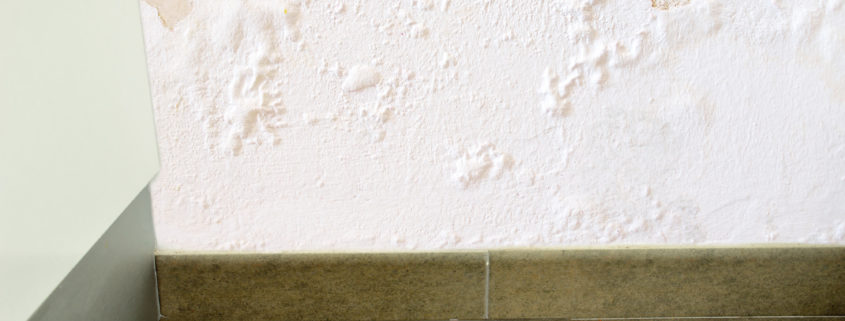Condensation is everywhere you look, yet people never seem to take notice. That’s because most condensation forms in areas that are quickly fixed—places like your car windshield or bathroom mirror.
However, condensation also forms in places susceptible to water damage. Just because you paid the big bucks for an excellent industrial roof, doesn’t mean that the roof is free from future problems.
Even the best-designed roofs can suffer from condensation issues. To help your roof materials stay in tip-top shape, let’s break down how to prevent condensation.
How Does Condensation Form?
Condensation forms when warm, moist air collides with cold surfaces. Ultimately, the cold surface can’t hold the excess water and so condensation forms on the surface.
We often see this happening on windows and other glass surfaces that act as a barrier between inside spaces and the outdoor air and world. (Usually, that condensation doesn’t cause harm. You simply wipe down the surface and you’re on your way.)
For example, imagine a cold winter morning and you’re starting your car. The cold air outside of your car cools down your windshield, so when you start the car (and turn on the heat) you’re creating an environment where the windshield is much cooler than the air inside your car.
The warm air from inside your car heats the windshield until the outside of the windshield starts to warm up. The cold air outside the car meets the warm windshield and condensation forms. To get rid of the “fog” you need to turn on the cold air to lower the windshield’s temperature and offset the difference between the outside air temperature and inside windshield temperatures.
Now let’s look at an example of harmful condensation.
Imagine you’re taking a shower and the hot, moist air comes into contact with the colder bathroom walls. That clash causes condensation drips on your walls (something you’ve probably experienced firsthand).
Wet bathroom walls encourage mildew and mold growth which can, in turn, cause respiratory problems and other illnesses. Industrial roofing condensation brings about similar issues. While mold growth is a real problem with commercial roofs, excess moisture can also cause structural damage. That’s why we need to learn how to prevent condensation as a building owner or homeowner.
Condensation and Your Roof
Condensation forms because your new roof stays colder than the air around your building, especially at night when the temperature drops (and your roof is cool) but the inside of the building is being heated.
The warm air in your building rises to meet the colder roof and the excess moisture condenses on the underside of the roof surface, usually on the underside where the water droplets are out of sight and out of mind.
That condensation can lead to corrosion, and at best, you’ll end up with a roof leak. At worst, your roof system is compromised, and there’s no reason to risk disaster and roof replacement when there are perfectly acceptable ways to prevent condensation.
How to Prevent Condensation
Preventing condensation is very possible if you understand why condensation happens (see above). Stopping moisture buildup and avoiding unnecessary roof repair is all about temperature differences and air moisture content (dew point temperature).
Solution #1: Control Your Moisture Levels
Without moist air, condensation can’t form. Preventing moist air isn’t always possible, but you CAN try to limit how much moisture floats around your building. For instance, make sure your building has attic ventilation and adequate drainage. Standing water certainly encourages moisture-laden air.
You also need to vent your heaters outside the building on the HVAC equipment on top of your flat roof. (That hot exhaust holds water and can cause condensation to form.)
Even washing down floors can cause moisture to hang in the air. Always ensure you’re using proper ventilation when washing the floors and using fans or air conditioning to help speed up the drying process.
Solution #2: Ventilation
Ventilation can help warm, moisture move out of the building before it can condense on or under your roof. Since hot air rises, vents closer to the ceiling will encourage air circulation and prevent condensation. You’ll often find these vents under eaves and along the roof ridges, near the outside gutters.
Solution #3: Insulation
Insulation is sort of like cheating Mother Nature. If your roof never gets cold, it can never form condensation.
While you can’t prevent the roof’s outside from cooling, you can insulate the underside.
Insulating the underside of your roof keeps the underside warmer than the outside air which helps to stop condensation from forming. Plus, the insulation itself acts as a coating barrier between the warm, moist air and the colder outside air.
In addition to insulation, you can also add a vapor barrier membrane specifically designed to block water vapor from penetrating your insulation. Membranes are a particularly effective solution.
Your Roofing Solution
You’re probably not an architect, an insulator or a meteorologist, so dealing with airflow, dew points and condensation isn’t your bread and butter (and that’s fine).
No one’s suggesting that you start physically adding vents to industrial buildings, put up insulation on your own or try venting your own heaters. Instead, talking about how to prevent condensation is simply arming yourself with knowledge (rather than teaching a trade).
Knowing how to prevent condensation is essential to finding the best professionals to prevent a situation in the first place. That’s why we’re here to help! We’re roofers and it’s what we’ve been doing at TEMA Roofing Services for three generations! Let us start a roof inspection for you and your commercial property.
We can help design and outfit your building to prevent condensation from forming on the underside of your roof, skylights and even water penetrations into the roof deck. Our roofing contractors will help keep your roof dry and your building in great shape for years to come.
If you’re ready to battle condensation, get in touch with us. We’re here to help!





